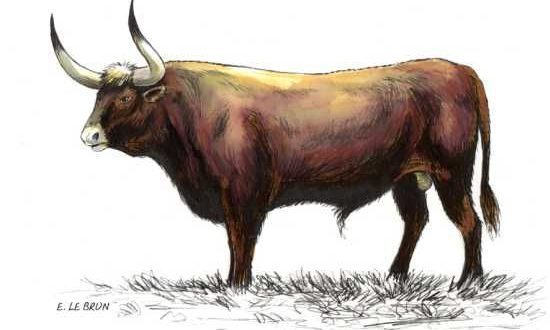Researchers are near to bringing back from the dead mythical giant beasts that once stamped through Europe’s forests.
Since its inception in 2009, the project, spearheaded by a team of European researchers, has successfully produced 300 calves whose genomes are a combination of present-day cattle DNA together with the genes from aurochs. This intermingling of genomes is the result of a genetic engineering technique known as “back-breeding.”
The auroch’s renowned size – they stood at nearly seven feet tall and weighed around one tonne – as well as their quick tempers are key characteristics scientists are trying to replicate as they gradually come closer to bringing aurochs back from the dead.
The legendary animal used to roam around the forests of Europe and even ventured into Asia and North Africa, but the last known specimen died in Poland in 1627.
They have not been seen in Britain since the Iron Age, more than 2000 years ago.
Professor Donato Matassino, an Italian scientist taking part in Operation Tauros, told The Telegraph: “I don’t think we’ll ever be able to create an animal that is 100 per cent like the aurochs, but we can get very close.
It is hoped aurochs could be slowly released back into the wild, finding their home in the woods and forests of northern Europe.
Prof Matassimo continued: “They’d play an important role in the ecology of the forest, trampling vegetation, eating bushes and keeping meadows and grassland clear.”
Aurochs have been depicted in cave paintings across Europe and were even written about by Roman emperor Julius Caesar.
Caesar described them as “a little below the elephant in size, and of the appearance, colour and shape of a bull.
“Their strength and speed are extraordinary; they spare neither man nor wild beast which they have espied.”
Agencies/Canadajournal
 Canada Journal – News of the World Articles and videos to bring you the biggest Canadian news stories from across the country every day
Canada Journal – News of the World Articles and videos to bring you the biggest Canadian news stories from across the country every day



